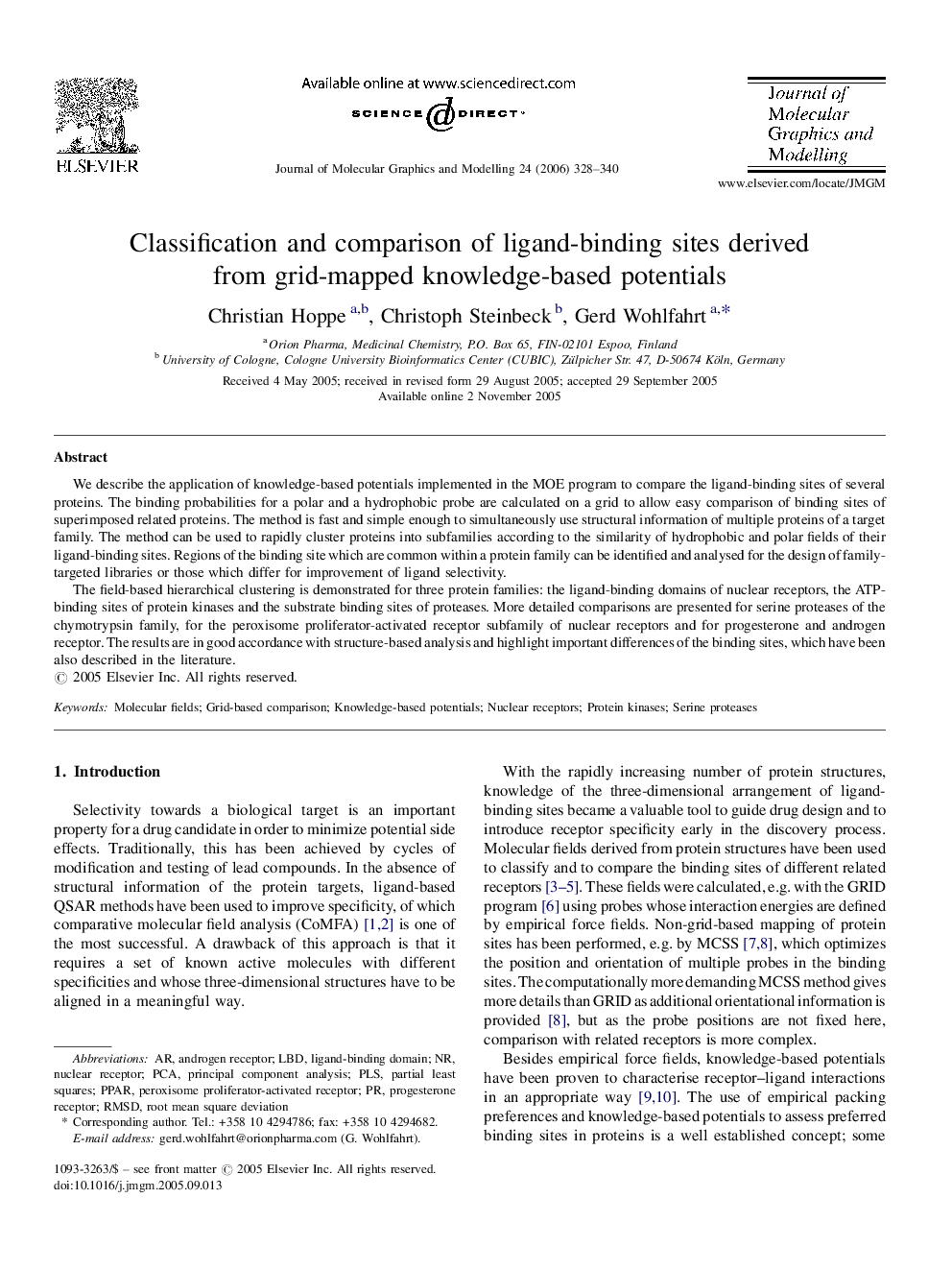| Article ID | Journal | Published Year | Pages | File Type |
|---|---|---|---|---|
| 444856 | Journal of Molecular Graphics and Modelling | 2006 | 13 Pages |
We describe the application of knowledge-based potentials implemented in the MOE program to compare the ligand-binding sites of several proteins. The binding probabilities for a polar and a hydrophobic probe are calculated on a grid to allow easy comparison of binding sites of superimposed related proteins. The method is fast and simple enough to simultaneously use structural information of multiple proteins of a target family. The method can be used to rapidly cluster proteins into subfamilies according to the similarity of hydrophobic and polar fields of their ligand-binding sites. Regions of the binding site which are common within a protein family can be identified and analysed for the design of family-targeted libraries or those which differ for improvement of ligand selectivity.The field-based hierarchical clustering is demonstrated for three protein families: the ligand-binding domains of nuclear receptors, the ATP-binding sites of protein kinases and the substrate binding sites of proteases. More detailed comparisons are presented for serine proteases of the chymotrypsin family, for the peroxisome proliferator-activated receptor subfamily of nuclear receptors and for progesterone and androgen receptor. The results are in good accordance with structure-based analysis and highlight important differences of the binding sites, which have been also described in the literature.
